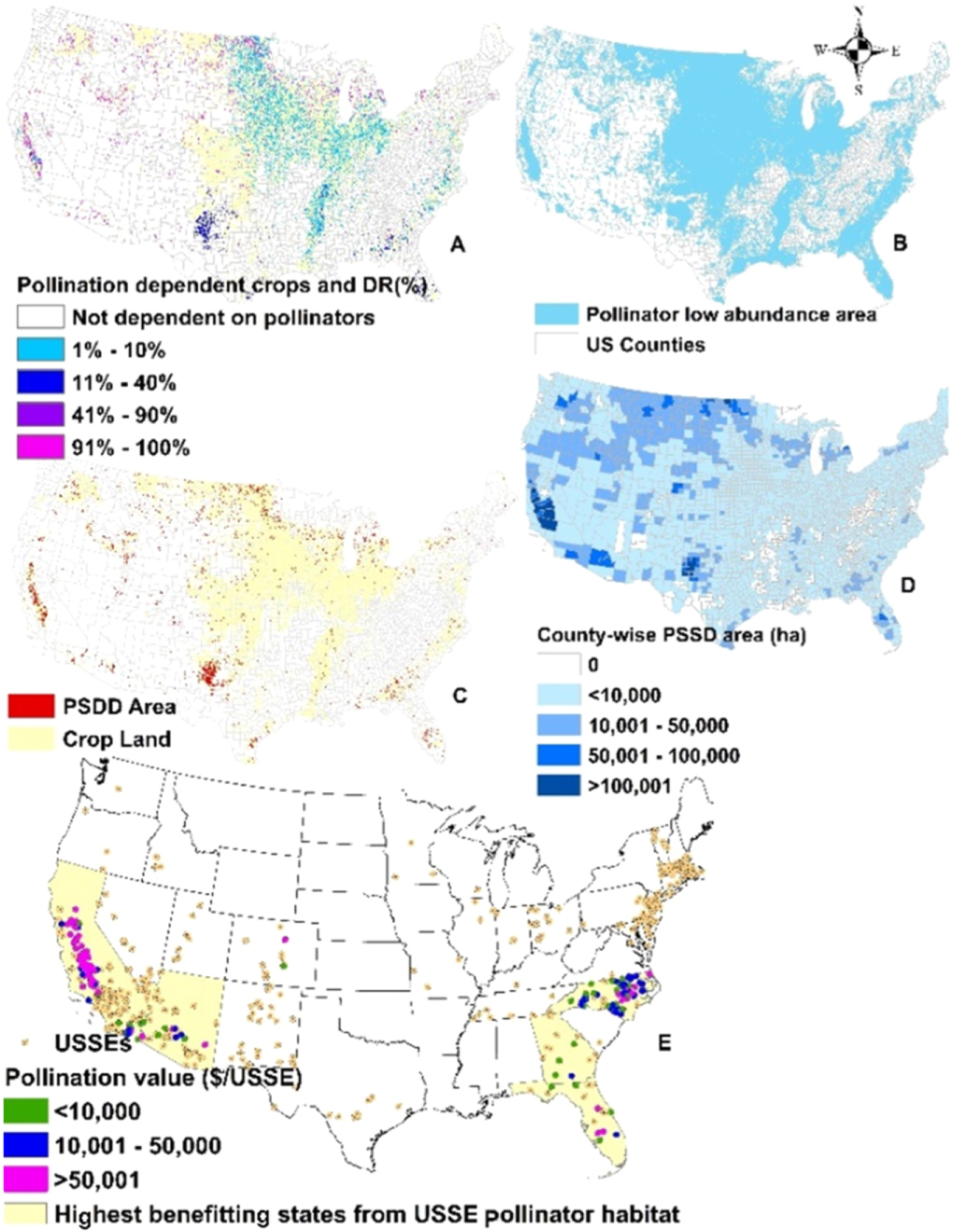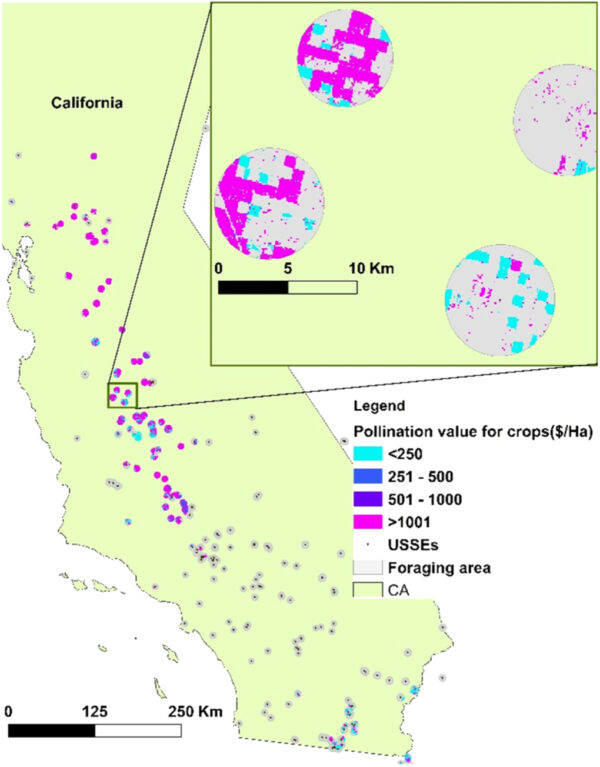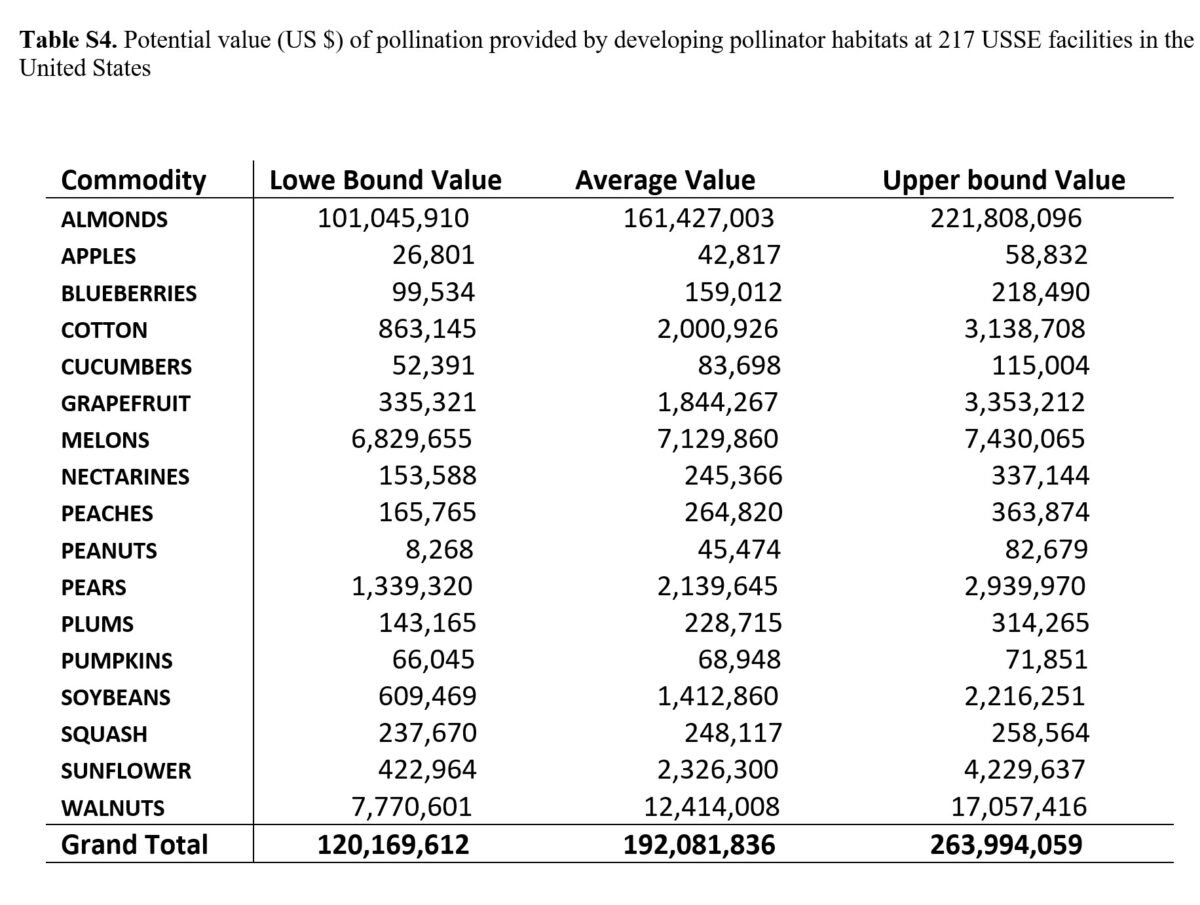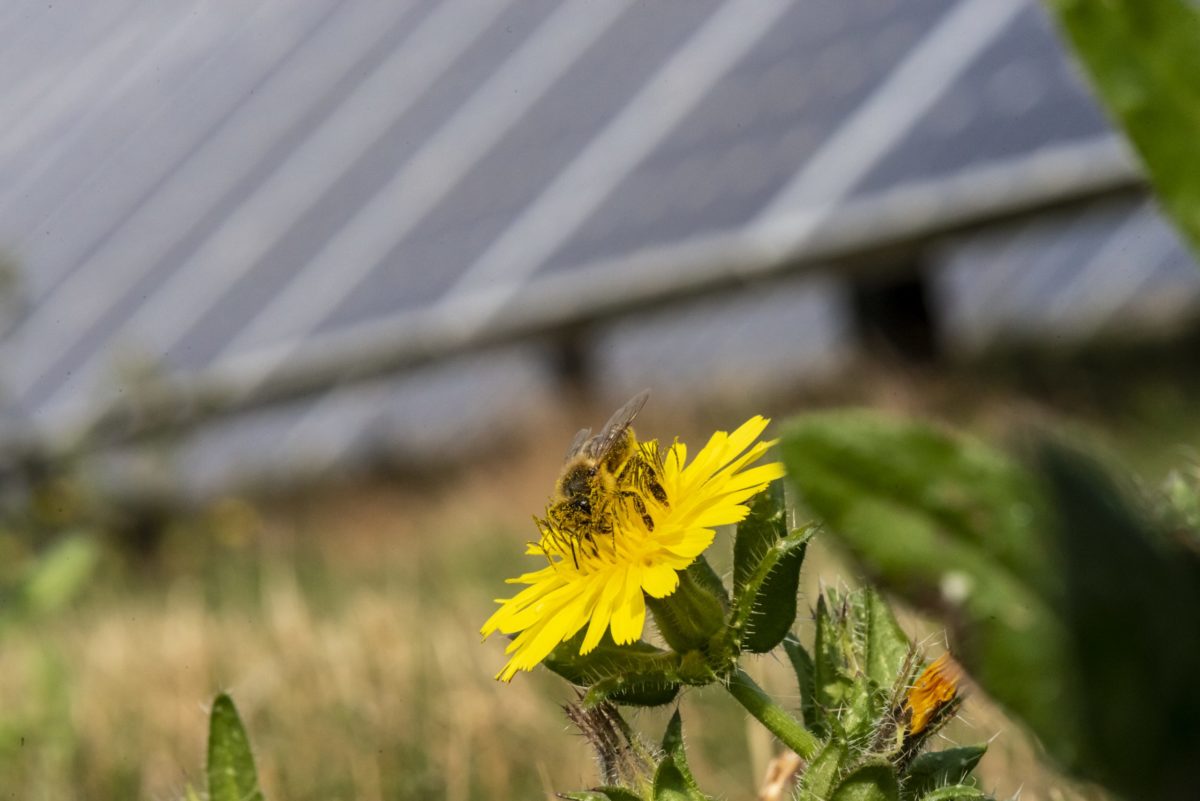Researchers have discovered that retrofitting 217 solar farms across the U.S. to accommodate pollinator habitats could generate between $120 and $264 million in annual benefits for farmers. Using a “spatially explicit” analysis, the government teams identified the exact solar facilities, farms, and crops that would benefit from these pollinator upgrades.
This open access research, titled “Valuation of pollination services from habitat management: a case study of utility scale solar energy facilities in the United States,” received funding from the U.S. Department of Energy’s Solar Energy Technologies Office (SETO), and was conducted by teams from Sandia National Laboratories and Argonne National Laboratory.

Initially, the research groups established a series of maps showing the locations of solar plants and pollinator-dependent crops. They discovered that the states with the greatest number of pollinator-dependent crops near solar facilities were North Carolina, Georgia, Florida, Arizona, and California.
The teams then began to map pollinator influence spheres by creating a circular buffer zone around each solar facility. This zone was determined based on the area of the solar plant and the average foraging distance of pollinators, typically about 1 to 2 miles. The analysis identified the area of pollinator-dependent crops within the buffer zone and assigned values to the crops, yield, price, and pollinator dependence. This data was then formulated into an equation to determine the potential value of pollinators from local solar facilities. Any parcels without definitive crop data were excluded.
The research included 217 solar facilities and determined that 80,000 hectares of farmland would benefit explicitly. The specific farming facilities projected to benefit can be gleaned from this available data.

Currently, U.S. farmers are investing substantial funds to pollinate their crops. For instance, California farmers spend $280 million annually to pollinate 393,000 hectares of almonds. Pollination services from the California-based solar farms could potentially offset 10% of the state’s almond crop pollination costs.
The financial benefits to farmers are likely greater than the estimates provided here.
Many solar facilities were not included in the study’s 217 specified power plants. Some were excluded due to the researchers’ belief that pollinator-dependent crops might be outside the 1- to 2-mile radius foraging area of the pollinator insects. While it was noted that pollinators do occasionally forage beyond that radius, the inconsistency and unpredictability of these occurrences make them unreliable for farmers. Other facilities were not included because they already had a high volume of pollinator habitats in the region, and it was thought that additional solar facilities would not provide substantial benefit.

The authors of the paper noted a caveat: the value created by these pollinators, as indicated in the table, does not account for the costs associated with constructing and maintaining the pollinator habitats.
This content is protected by copyright and may not be reused. If you want to cooperate with us and would like to reuse some of our content, please contact: editors@pv-magazine.com.









By submitting this form you agree to pv magazine using your data for the purposes of publishing your comment.
Your personal data will only be disclosed or otherwise transmitted to third parties for the purposes of spam filtering or if this is necessary for technical maintenance of the website. Any other transfer to third parties will not take place unless this is justified on the basis of applicable data protection regulations or if pv magazine is legally obliged to do so.
You may revoke this consent at any time with effect for the future, in which case your personal data will be deleted immediately. Otherwise, your data will be deleted if pv magazine has processed your request or the purpose of data storage is fulfilled.
Further information on data privacy can be found in our Data Protection Policy.